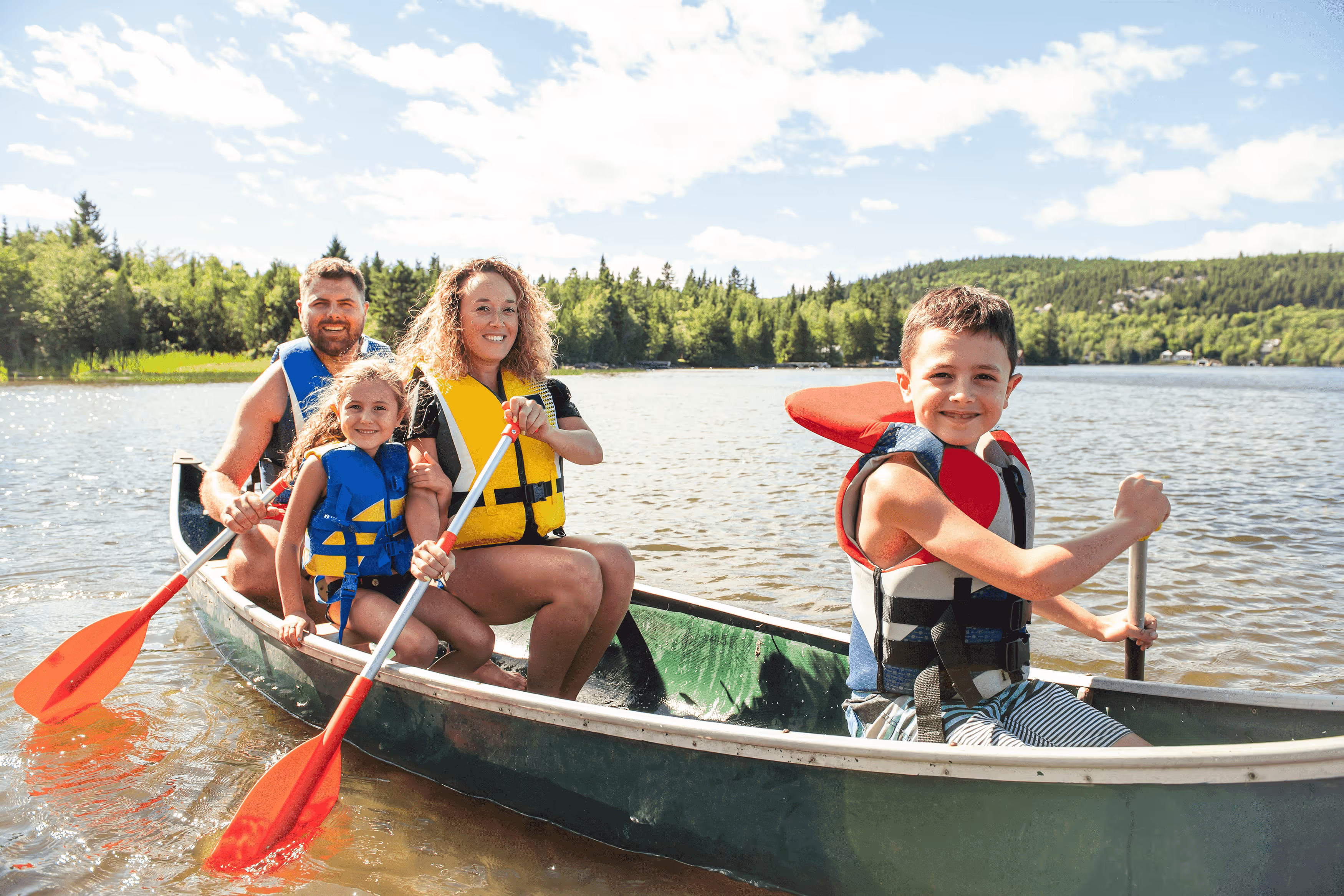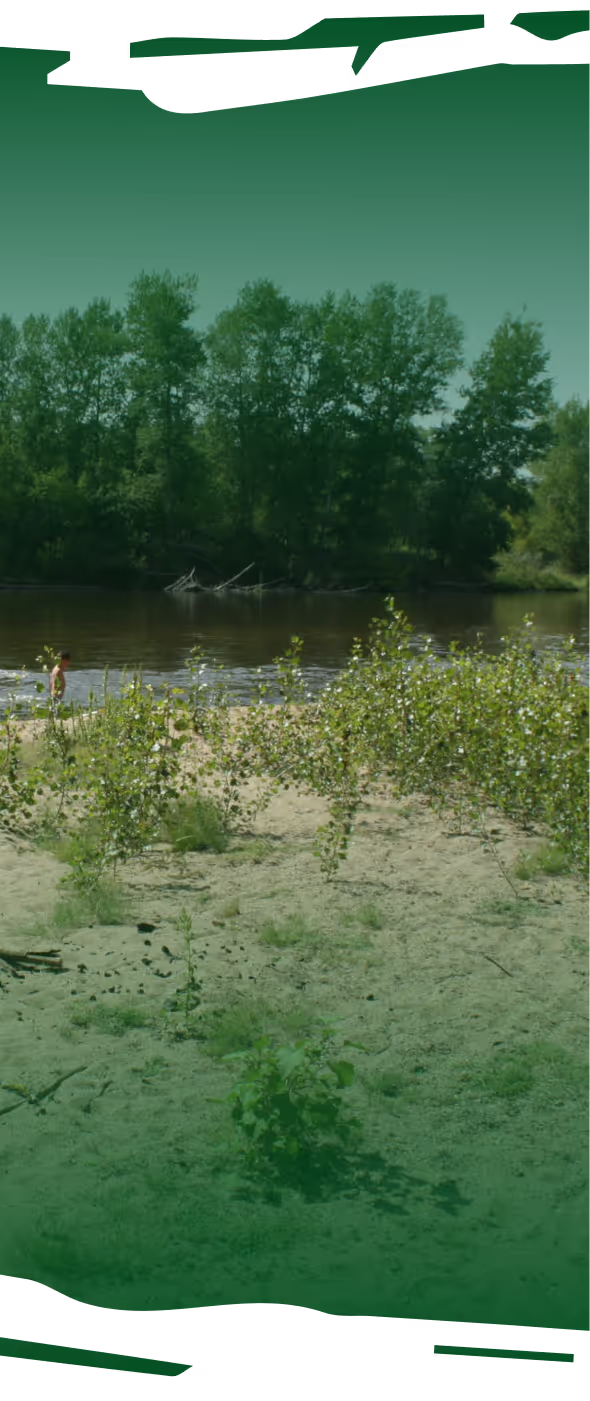How to canoe? Complete beginner guide 2025
Canoeing is an activity accessible to everyone, allowing you to explore nature from the water. Whether you're looking for a peaceful family outing or a sporty adventure, canoeing offers a unique experience as you glide along the water. No need to be an athlete or have any prior experience! Canoeing on the Loire, with its varied landscapes and calm waters, is one of the best ways to get started.
Ready to try this amazing activity? This guide walks you through every step to ensure a successful first canoeing trip. From gear to basic techniques, discover everything you need to paddle with confidence.
Basic steps for canoeing
Preparation before your outing
Choose the right moment
Favor a calm day without strong wind. Mornings are often ideal: fewer people on the water and more peaceful conditions. Check the weather and avoid stormy days.
Select your route
For beginners, choose calm water like a lake or quiet river. Avoid rivers with strong current or rapids. A 2-3 hour outing is perfect for starting.
Getting into the canoe
Safe boarding technique:
- Place the canoe parallel to the shore in the water
- Hold firmly both edges of the canoe
- Put one foot first in the center of the craft
- Sit down quickly keeping weight centered
- Get comfortable before paddling
To perfectly master this crucial step, discover all techniques in our detailed guide how to get into a canoe.
Practical tip: Never put your foot on the edge of the canoe, it can tip over!
Position in the canoe
Seated position (recommended for beginners):
- Straight back against the backrest
- Feet flat on the bottom
- Knees slightly bent for balance
Kneeling position (more advanced):
- Knees spread for more stability
- Buttocks against the small seat
- This position gives more power but requires training
Basic paddling technique
Hold the paddle correctly:
- One hand on top (the handle)
- Other hand in the middle of the shaft
- Spacing = width of your shoulders
The paddling movement:
- Entry: Plunge the blade in water near your feet
- Pull: Pull the paddle backward along the canoe
- Exit: Take the paddle out at hip level
- Return: Bring the paddle forward to start again
These basics give you a good start, but to perfect your technique and gain efficiency, consult our detailed advice how to paddle well in canoe.
Paddling together: The person in back steers the canoe and sets the rhythm. Alternate sides regularly to maintain straight trajectory.
Equipment needed for canoeing
Mandatory equipment
Life jacket
This is safety equipment number 1, mandatory by French law. Choose it in your size and make sure it's well adjusted. Even if you can swim, wear it systematically.
Suitable paddle
The canoe paddle has a single blade (unlike kayak). Choose the right length: standing, it should reach between your chin and nose.
Length, shape, material... all these criteria count! Discover our complete guide how to choose your canoe paddle to make the right choice.
Distress whistle
Attached to the life jacket, it allows alerting in case of problem. It's mandatory and can save lives!
Recommended equipment
Suitable clothing:
- Quick-dry clothing (avoid cotton)
- Closed non-slip shoes
- Cap and sunglasses
- Change of clothes in waterproof bag
Clothing choice greatly influences your comfort. For all details and specialized advice, consult our guide how to dress for canoeing.
Practical accessories:
- Waterproof sunscreen
- Water bottle (you dehydrate quickly on water)
- Energy snack
- Waterproof camera
- Waterproof bag for your belongings
Provided vs personal equipment
At Ohay, we provide:
- Perfectly maintained canoe
- Professional quality paddles
- Life jackets all sizes
- Waterproof bags for your belongings
- Complete safety briefing
You bring: Your clothes, your good mood and your desire to discover!
Safety precautions when canoeing
Before departure
Inform your relatives
Always warn someone about your outing: departure time, planned route and estimated return time. In case of problem, rescue will know where to look for you.
Check conditions
Check weather and water levels. Avoid going out if:
- Strong wind forecast (over 20 km/h)
- Storm announced
- Water level too low or too high
- Very cold water temperature
Know your limits
Be honest about your level and physical condition. Better to start with a short and easy outing than to find yourself in difficulty!
During the outing
Navigation rules
- Stay close to banks if you're beginner
- Always navigate in current direction if possible
- Give priority to motorized boats
- Respect forbidden zones (nature reserves, private properties)
What to do in case of capsizing?
- Stay calm - that's most important
- Hold onto the canoe - it floats even upside down
- Swim to shore pushing the canoe
- Empty the water once dry
- Warm up if necessary
Signal your presence
Wear bright colors to be visible. The whistle serves to signal your position in case of fog or emergency.
Group navigation
Stay grouped
Never get too far from each other. The slowest sets the pace. Designate a leader who knows the route well.
Communication
Use simple gestures to communicate at distance. In case of problem, a long whistle blast signals emergency.
Benefits of canoeing
Physical benefits
Complete and gentle sport
Canoeing works many muscles without traumatizing joints. It's perfect for:
- Strengthening upper body (arms, shoulders, back)
- Working abdominals (permanent core strength)
- Improving balance and coordination
- Developing cardiovascular endurance
Accessible to all
Contrary to common beliefs, canoeing doesn't require exceptional strength. Technique takes priority over power. Children from 6 years old to seniors of 70 years can practice!
Mental benefits
Total disconnection
On water, no more notifications, no more urban stress. The regular rhythm of paddling and water sound have a scientifically proven soothing effect.
Reconnection with nature
Observing wildlife from water offers unique perspectives. Herons, kingfishers, dragonflies... Wildlife is often less fearful when approached silently by canoe.
Self-confidence
Mastering a new activity, overcoming apprehensions, succeeding in your first route... Canoeing boosts self-esteem!
Social benefits
Sharing activity
In tandem canoe, communication and mutual help are essential. It's wonderful for strengthening family or friendly bonds.
Meetings
The paddler community is welcoming. Clubs, organized outings, courses... Beautiful encounters await you!
Best places for canoeing
Criteria for good beginner spot
Ideal water body:
- Calm water without dangerous current
- Reasonable depth (1-3 meters)
- Accessible banks for boarding/landing
- Pleasant landscapes for eye pleasure
- Safety infrastructure (nearby rescue)
Our recommendation: Loire Valley
Why Loire is perfect for beginners:
Ideal conditions:
- Very gentle current (2-3 km/h)
- Clear shallow water (1-2 meters)
- Sandy bottom (no dangerous rocks)
- Sandbanks for breaks
Exceptional setting:
- UNESCO heritage (Loire castles)
- Sancerre vineyards backdrop
- Preserved wildlife (280 bird species)
- Picturesque villages along Loire
Optimal safety:
- State-certified guides at Ohay
- Professional equipment provided
- Organized return shuttle
- Quick rescue if needed
Other recommended regions
For families:
- Dordogne (Périgord) - castles and gastronomy
- Lot (Occitanie) - medieval villages
- Sèvre Niortaise (Marais Poitevin) - "Green Venice"
For more sensations:
- Ardèche - spectacular gorges
- Tarn - Causses landscapes
- Verdon - turquoise waters
Practical advice: Always start with supervised outings at recognized nautical bases. Local guides know conditions and potential dangers perfectly.

Frequently asked questions — Canoe Kayak Loire
Knowing how to swim is not legally mandatory, but it's strongly recommended. Life jacket is mandatory and keeps you afloat. On our Loire routes, water is shallow (1-2m) and you can stand almost everywhere.
From 6 years old in canoe with adult. Child sits in front to observe and participate, adult steers in back. No maximum age: our oldest clients are 80 years old!
No if done properly! Technique takes priority over strength. Good regular rhythm tires less than disorderly paddle strokes. Our 2h outings are accessible to all fitness levels.
Start with very short outing with reassuring guide. Life jacket gives confidence and slow progression allows taming aquatic element. Many of our clients have overcome their apprehension!
Yes, except storms! With suitable equipment (waterproof clothing), light rain doesn't bother. It's even magical: fewer people, wilder nature, cozy atmosphere.
Canoe is easier for beginners: more stable, simpler boarding, possibility to navigate together.




